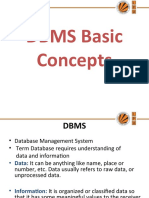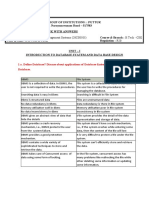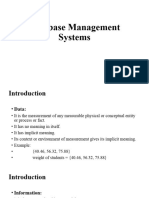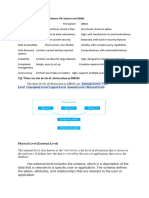0% found this document useful (0 votes)
14 views3 pagesDBMS
The document compares file systems and database management systems (DBMS), highlighting that file systems organize files in storage but lack advanced features like data redundancy management, backup, and security, while DBMS provides structured data management with efficient query processing and data integrity. It also explains the three levels of data abstraction in DBMS: the physical level, which details how data is stored; the logical level, which describes what data is stored and its relationships; and the view level, which allows end-users to interact with the data. Overall, data abstraction in DBMS enhances user access, security, and system efficiency.
Uploaded by
bolimeradineshCopyright
© © All Rights Reserved
We take content rights seriously. If you suspect this is your content, claim it here.
Available Formats
Download as ODT, PDF, TXT or read online on Scribd
0% found this document useful (0 votes)
14 views3 pagesDBMS
The document compares file systems and database management systems (DBMS), highlighting that file systems organize files in storage but lack advanced features like data redundancy management, backup, and security, while DBMS provides structured data management with efficient query processing and data integrity. It also explains the three levels of data abstraction in DBMS: the physical level, which details how data is stored; the logical level, which describes what data is stored and its relationships; and the view level, which allows end-users to interact with the data. Overall, data abstraction in DBMS enhances user access, security, and system efficiency.
Uploaded by
bolimeradineshCopyright
© © All Rights Reserved
We take content rights seriously. If you suspect this is your content, claim it here.
Available Formats
Download as ODT, PDF, TXT or read online on Scribd
/ 3























































































